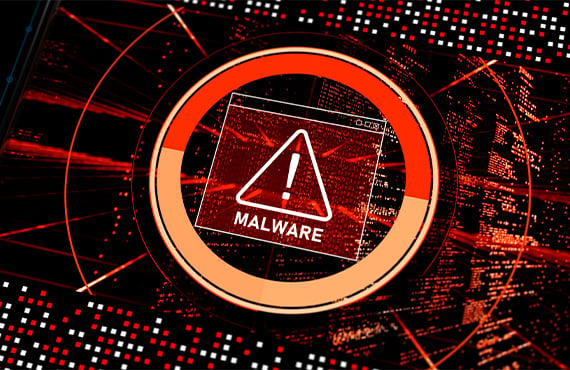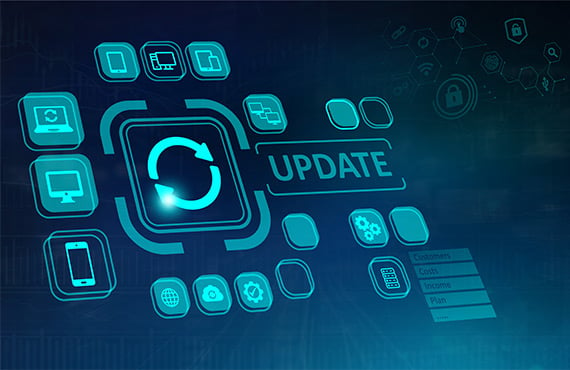
Industrial networks are facing unprecedented risks in today's landscape.
The increasing interconnectivity and reliance on automation and control systems have made these networks more susceptible to cyber threats. The alarming rise in attacks highlights an urgent need for industrial cybersecurity to be a top priority.
Thus it’s essential to adopt a sophisticated approach throughout their digital transformation journey to ensure the security of their OT networks. This includes securing legacy systems and implementing new technologies.
Trusted partners like Proconex provide comprehensive visibility, round-the-clock monitoring, and end-to-end protection. Proconex has extensive expertise and a range of services. This equips it to fortify operations against ever-evolving threats.
The Growing Threat Landscape
In recent years, industrial control systems (ICS) have become more connected. This has made them more vulnerable to cyberattacks. This expanded attack surface has led to a surge in malicious activities. The activities aim to disrupt critical infrastructure and manufacturing operations.
Notable instances of such attacks include:
- Researchers uncovered Triton Malware in 2017. It was the first malware designed to target safety systems in industrial plants. It caused an unexpected shutdown of a petrochemical plant in Saudi Arabia. Experts caution that a future attack of this nature could result in loss of life or environmental catastrophes.
- In 2015 and 2016, attackers targeted Ukraine's power grid. These were the first confirmed cyberattacks on an electric grid. Hackers orchestrated widespread blackouts across Ukraine. They did this by exploiting malware to take control of systems at three energy companies. Several hundred thousand people were left without power, according to estimates or show. A similar attack occurred a year later.
- The 2014 German Steel Mill incident demonstrated the physical damage that cyberattacks can inflict. Hackers gained control of a blast furnace at a German steel mill. They prevented operators from shutting it down. The result was extensive damage to the system.
- In 2021, criminal hackers attacked Colonial Pipeline. They preyed on weak cybersecurity to breach this major U.S. fuel pipeline. They encrypted systems and demanded ransom, forcing Colonial to halt operations. The aftermath included widespread fuel shortages, exposing vulnerabilities in critical infrastructure.
These incidents underscore the risks associated with inadequate security measures.
As automation expands, your organization must focus on industrial cybersecurity. Safeguard critical systems, data, intellectual property, and human safety.

Unique Challenges of Industrial Networks
Industrial networks face unique security challenges. These challenges set them apart from typical enterprise IT environments. These challenges arise from using legacy systems and proprietary protocols. Before cybersecurity became a significant concern, someone developed them.
- Legacy Systems: Industrial environments often rely on equipment that has existed for many years, if not decades. The designers of these legacy systems prioritized reliability and uptime over security. As a result, they lack modern safeguards. They are susceptible to sophisticated cyber threats.
- Industrial control systems communicate using proprietary protocols. Some examples include Modbus, DNP3, and Profinet. These proprietary languages can obscure visibility into network activity. This makes it difficult to detect and respond to potential threats.
- Air-Gapped Networks: Many industrial sites operate on isolated networks without internet connectivity. But, relying on air gaps is not enough. Threats can still spread through removable media. Additionally, remote sites often have some external connectivity, further increasing the risk.
Given these specific challenges, it is crucial to adopt a tailored approach to OT/ICS cybersecurity. Standard IT security tools and practices may need to be more effective in securing industrial operations.
Invest in solutions designed for the unique requirements of modern industrial environments to ensure their security.
How Malware Bypasses Defenses
Cybercriminals continuously develop advanced and more sophisticated threats that bypass traditional security tools. Many organizations solely depend on antivirus software, firewalls, and other perimeter defenses.
Although these defenses are crucial, they are inadequate in stopping advanced malware.
Attackers often exploit vulnerabilities in the supply chain to bypass defenses. They don't directly target an organization. Instead, they focus on weaknesses in software vendors. They also target managed service providers, contractors, and other third parties with access.
Once a supply chain partner is compromised, it can distribute malware. This happens through seemingly trustworthy updates and communication channels.
Social engineering is another commonly used technique. Despite technical safeguards, individuals can exploit human vulnerabilities. Attackers use phishing emails, phone scams, and other tricks to deceive users. They aim to make users turn off security measures or grant access.
Even well-intentioned employees can click on malicious links or attachments. This allows malware to infiltrate the network perimeter.
Adversaries are always finding new ways to infiltrate. Organizations can't just rely on preventing breaches at the perimeter. Ensuring cyber resilience requires implementing safeguards beyond antivirus and firewalls. This is to detect threats that inevitably slip through defenses effectively.

A Holistic Approach to Security
A comprehensive cybersecurity program requires more than just technical controls and solutions.
At Proconex, we take a holistic approach. We encompass people, processes, and technology for in-depth defense.
We support defense in depth. Instead of relying on one defensive measure, it involves layers of control. This strategy involves adding many layers of controls to your industrial network and operations. We can safeguard critical assets and proactively prevent threats from infiltrating them. We combine technical controls, such as firewalls, VPNs, and network monitoring, with strict policies. We also use security awareness training and network segmentation.
Tailored Policies and Procedures are the cornerstone of your security program. They serve as the foundation. Our team conducts thorough security assessments. We do this to gain a deep understanding of your distinct environment and risk factors. We use gathered insights to offer personalized recommendations. We also help install policies optimized for your specific needs and infrastructure. This encompasses access controls, change management, vulnerability management, and incident response plans.
Ongoing Security Awareness Training is essential for securing industrial networks. Addressing the human element is critical. It poses one of the most significant risks. That's why it is crucial to maintain a constant focus on security awareness and education. Our immersive training programs are designed to equip your personnel with the best cybersecurity practices. The practices are specific to their roles and responsibilities. By doing so, we foster an organizational culture that prioritizes security from the start.
We specialize in developing network segmentation strategies that control lateral movement. This ensures limited access to your crucial industrial control systems. This approach not only mitigates threats but also minimizes the potential impact. Separate OT systems from IT networks. This is a fundamental step to reduce your attack surface. Our team of expert engineers collaborates with you to create secure network zones. We base these zones on asset criticality and trust levels.
Our comprehensive approach combines people, processes, and technology. This provides a customized defense solution that meets your requirements. Contact us today to take the first step toward securing your industrial operations.
Our Risk Assessment Services
A comprehensive risk assessment is the cornerstone of a successful cybersecurity program. Our team of experts is proficient in conducting on-site evaluations. We customize them to your specific environment.
We identify potential vulnerabilities by analyzing various aspects. These include physical security, network architecture, and access controls. They also include system configurations, incident response plans, and business processes.
The result is a detailed report summarizing the vulnerabilities we have identified. It also includes a prioritized action plan to fortify your defenses. With our guidance and a clear roadmap, you can focus on implementing the most impactful security controls.
You’re probably eager to find out more. Your patience is about to pay off...
Incident Response
In a security incident, it is crucial to respond to contain the breach. This will prevent any further damage. Our team of experts uses established incident response methodologies. These methods focus on containment, investigation, and remediation.
Containment
- We isolate infected systems to prevent any lateral movement.
- We deactivate compromised accounts to cut the impact.
- We block suspicious IP addresses to prevent unauthorized access.
- We quarantine infected endpoints to prevent further spread.
Investigation
- We thoroughly analyze logs, network traffic, and artifacts. We do this to determine the incident's root cause.
- Our experts identify the initial infection vector to understand how the breach occurred.
- To assess the extent of the impact, we identify compromised systems and data.
- We conduct an impact assessment to understand the severity of the incident.
Remediation
- We cut malware. We address vulnerabilities on affected systems to ensure they are secure.
- Passwords are reset for compromised accounts. To prevent unauthorized access, we revoke permissions.
- We restore systems from clean backups to keep them free from malicious activity.
- We update antivirus and other defenses to enhance security measures.
- We develop mitigation strategies to prevent similar incidents from occurring.
Our team has extensive expertise and experience in responding to real-world breaches. We follow proven playbooks tailored to industrial environments.

Legacy System Upgrades
Adding security products alone is not enough. These systems are becoming more vulnerable to cyber threats.
That's why we offer comprehensive services to upgrade your control systems. We also upgrade HMIs, networking gear, and more. Our consultants will assess your environment and create a tailored transition strategy.
We handle everything from procurement to deployment. We integrate new solutions with your existing infrastructure. With our expertise, you can transform your operations into a modern, secure architecture. It protects against emerging threats. Goodbye to outdated vulnerabilities! Gain the flexibility to enhance security as risks evolve.
Trust Proconex to safeguard your operations from devastating attacks.
Go Forth and Prosper: Put This Into Practice
The threat landscape continues to evolve. It's evident that industrial networks need specialized security solutions. It is crucial to safeguard both legacy systems and new technologies. This ensures safety, prevents costly downtime, and protects intellectual property.
At Proconex, we adopt a comprehensive approach to securing your entire operational environment. We conduct risk assessments and track threats. We also create incident response plans, manage vulnerabilities, and upgrade legacy systems.
Learn more about fortifying your industrial control systems against modern threats. Our experts can conduct thorough assessments. They can recommend robust solutions to safeguard your critical assets.
